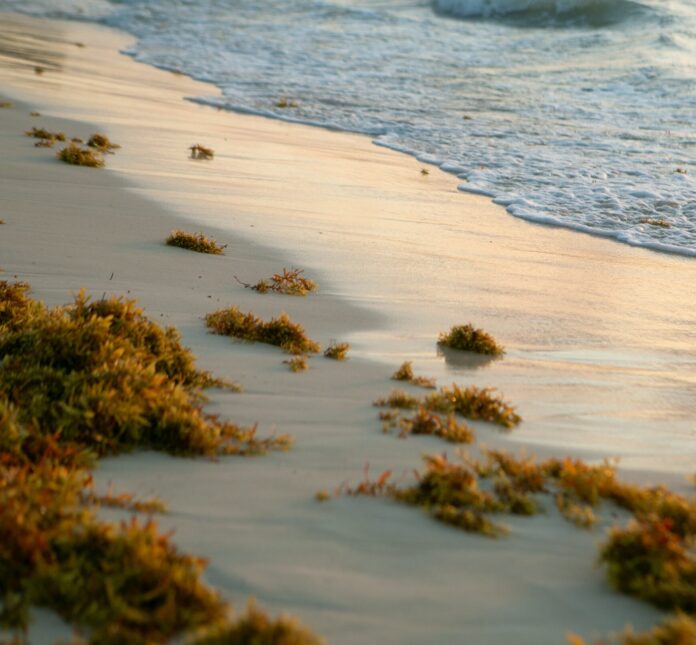As far as seaweed is concerned, we prefer it in our sushi more than on beaches. While the leafy organism is vital to healthy biodiversity, some of it is far from pleasant to be around.
Mexico has been trying to revive its GDP after its tourism sector took a 25% knock during the pandemic. Although tourists have been returning to the North American country, a new wave of seaweed on Mexican beaches is placing that in jeopardy.
Sargassum is a type of brown algae found in the Sargasso Sea that can grow to several feet in length. Though it was initially confined to the sea that inspired its name, sargassum now stretches 5,000 miles from the Gulf of Mexico to the coast of West Africa.
The algae has already been spotted on a number of Mexican coastlines, leaving an odor of sewerage in its wake. When sargassum decomposes, it creates hydrogen sulfide gas which can be harmful to humans.
Record-amounts of the seaweed showed up on shores from Puerto Rico to Barbados last summer, with it expected that Mexico could face up to three feet of sargassum in Cancun and Playa del Carmen. There are already reports of the brown algae on beaches in Tulum.
The influx of seaweed has been impacting scuba diving, sailing, and other tourism ventures. As a result, hotels and restaurants along Mexico’s coast have been forced to employ special worker task forces to deal with the clean-up.

